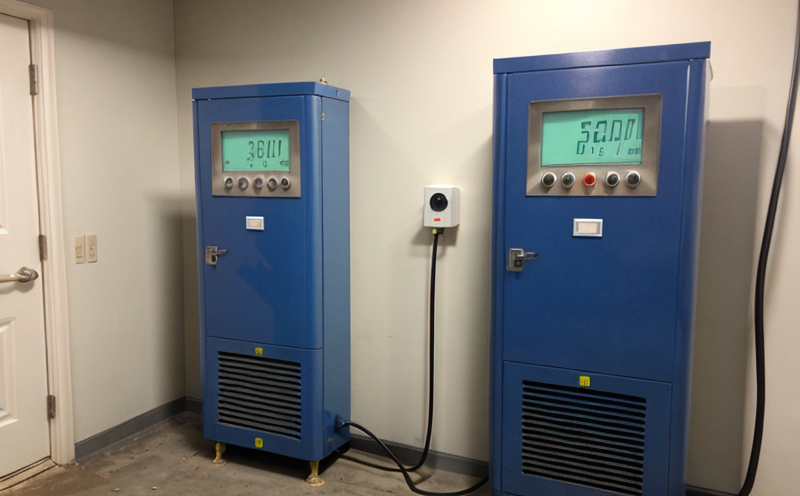DIN 20001 Emergency Ventilation Performance Testing in Mines
The DIN 20001 standard provides a rigorous framework to ensure that mine ventilation systems are capable of providing safe and effective emergency evacuation during incidents. This testing is critical for maintaining the operational integrity and safety compliance of mining facilities.
Emergency ventilation performance testing in mines involves simulating real-world scenarios where the primary role of the ventilation system is to protect miners from hazardous conditions. The test evaluates the ability of the ventilation system to provide safe, breathable air under adverse conditions such as fires, explosions, or other emergencies that could compromise the mine environment.
During these tests, the focus is on assessing the efficiency and effectiveness of the ventilation system in maintaining oxygen levels, controlling dust accumulation, and removing toxic gases. The testing ensures that the ventilation network can rapidly clear out smoke, fumes, and other pollutants to prevent respiratory hazards and ensure a safe environment for evacuating personnel.
The DIN 20001 standard is particularly stringent and requires thorough preparation of test specimens, which include mock-ups or sections of the actual mine ventilation system. The testing apparatus used includes sophisticated monitoring equipment capable of measuring critical parameters such as air flow rates, pressure differentials, and contaminant concentrations.
The acceptance criteria for DIN 20001 compliance involve stringent limits on the time allowed to evacuate personnel safely from hazardous areas. Compliance also requires that the ventilation system can maintain acceptable air quality standards throughout the duration of an emergency scenario. This includes demonstrating the ability to mitigate the effects of a worst-case scenario, such as a large-scale fire or gas leak.
The testing process involves several stages: initial setup and calibration, simulation of various emergency conditions, real-time monitoring of system performance, and final analysis and reporting. The results provide critical insights into the ventilation system's capabilities, highlighting any areas for improvement to enhance safety measures in the event of an actual emergency.
By adhering to DIN 20001 standards, mining companies not only ensure compliance with regulatory requirements but also demonstrate a commitment to worker safety and operational reliability. This testing is essential in maintaining the highest standards of safety and efficiency within the mine environment, ensuring that all personnel have a secure evacuation route during emergencies.
- Ensures compliance with DIN 20001 standard
- Simulates real-world emergency scenarios
- Assesses ventilation system performance under adverse conditions
- Measures critical parameters such as air flow rates and contaminant concentrations
Customer Impact and Satisfaction
For mining companies, ensuring the safety and reliability of their ventilation systems is paramount. DIN 20001 testing provides a robust framework to achieve this goal, thereby enhancing customer satisfaction by demonstrating a commitment to worker safety and operational excellence.
Customers benefit from the peace of mind that comes with knowing that their ventilation systems have been thoroughly tested and proven capable of handling emergencies effectively. This not only meets regulatory requirements but also sets a benchmark for industry best practices in mine safety.
The testing process involves collaboration between our technical experts and customers, ensuring that all specific needs and operational scenarios are addressed. This collaborative approach results in customized test procedures that provide the most accurate evaluation of the ventilation system's performance.
Customers also benefit from the detailed reports generated after each test, which offer actionable insights into areas for improvement. These reports guide decision-makers on necessary upgrades or adjustments to ensure ongoing compliance and safety.
The satisfaction of our customers is further enhanced by the comprehensive support we provide throughout the testing process. From initial consultation through to final analysis, we are committed to ensuring that every customer receives the highest quality service and expertise available in the field.
Environmental and Sustainability Contributions
DIN 20001 emergency ventilation performance testing plays a crucial role in supporting environmental sustainability efforts within mining operations. By ensuring that ventilation systems are efficient and effective, this testing helps reduce energy consumption and minimize the environmental impact of mine operations.
The testing process focuses on optimizing system performance to maintain safe air quality conditions, thereby reducing the need for excessive ventilation or overcompensation during emergencies. This leads to lower energy demands and reduced greenhouse gas emissions, contributing positively to the overall sustainability goals of mining companies.
In addition to operational efficiency, DIN 20001 testing also supports long-term environmental sustainability by ensuring that ventilation systems remain reliable and effective. This reliability helps in maintaining a safe working environment, which is essential for sustainable productivity and worker health.
The commitment to sustainability extends beyond the immediate benefits of energy savings; it also involves the broader impact on community well-being and environmental conservation efforts. By adhering to stringent testing standards like DIN 20001, mining companies contribute to a more sustainable future by setting an example for best practices in safety and efficiency.
Through our expertise and commitment to sustainability, we help mining companies integrate environmental considerations into their operations seamlessly. This ensures that every aspect of the ventilation system is optimized not only for immediate needs but also for long-term sustainability goals.





